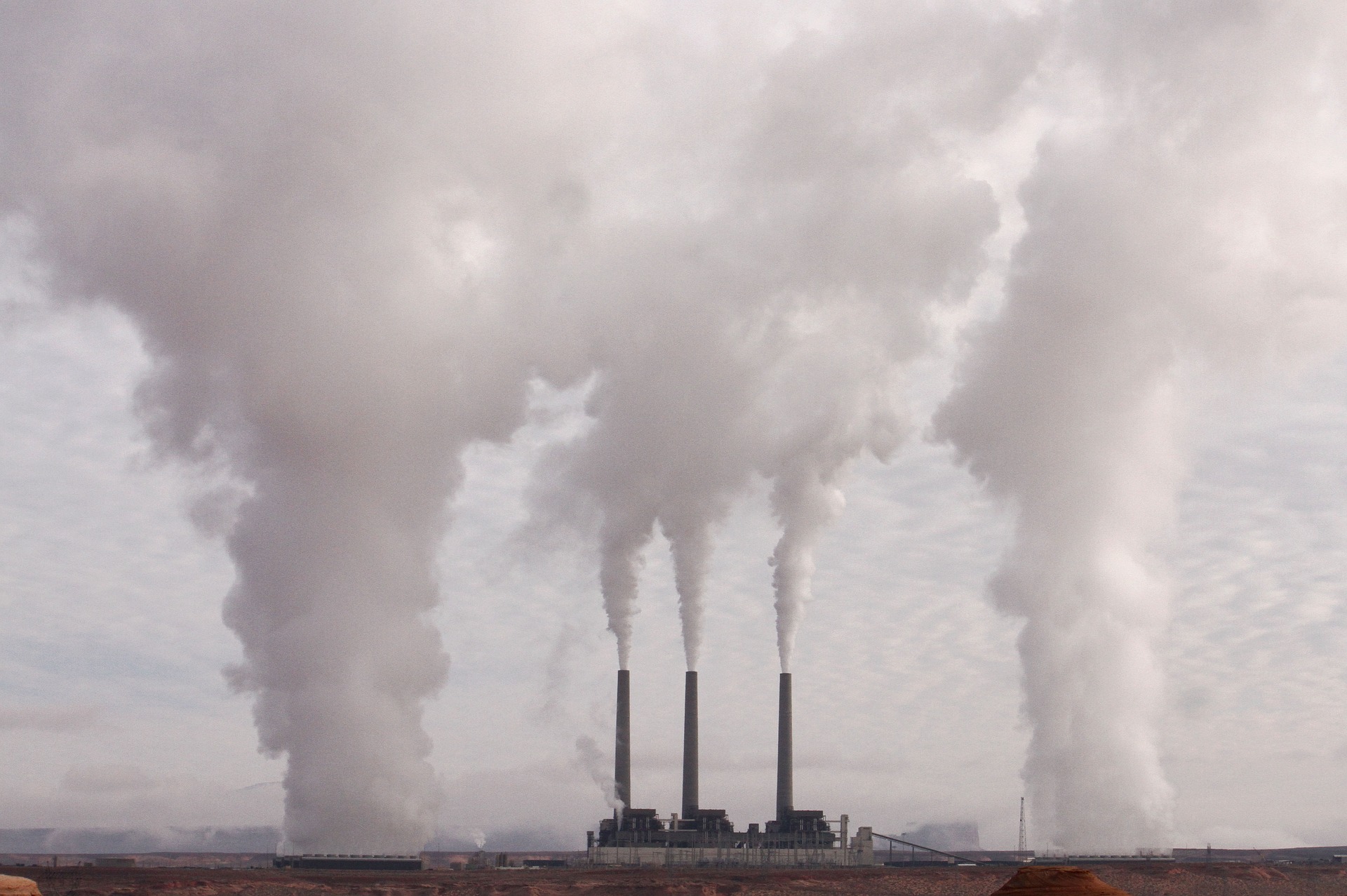
The Clean Economy Act of 2020 (S.3269) was introduced in the 116th Congress on February 2, 202 and was referred to the Senate Committee on Environment and Public Works. NM senators Tom Udall and Martin Heinrich joined 30 other Democrats to support the bill. The Clean Economy Act, which the NM senators had co-sponsored, sparked off heated environmental debates largely falling along party lines. However, some people remained uncommitted or undecided.
The bill sought to achieve net-zero greenhouse gas emissions by 2050. Had it scaled all the congressional hurdles and been signed into law, it would have greatly strengthened and empowered the Environmental Protection Agency (EPA) to set and implement goals ensuring greenhouse gas emission targets are met.
Udall said at that time in his address to the Colorado College State of the Rockies Project, “The crisis of nature and the crisis of climate change have risen to a crescendo – and the public is ready for action. Here’s the good news: I’m here to tell you we can do it. Because a movement is building – and it starts right here in the West.” The bill was supported by Michael Brune, Executive Director of Sierra Club, Gina McCarthy, President and CEO of the Natural Resources Defense Council (NRDC), Collin O’Mara, president and CEO of the National Wildlife Federation, Georges C. Benjamin, MD, Executive Director of the American Public Health Association, the partners of the BlueGreen Alliance, the coalition of the nation’s largest labor unions and environmental groups.
Brune, while voicing his support said, “This bill would be an important step forward for our booming clean energy economy because it both reinforces EPA’s existing authority to rein in carbon pollution, and sets firm, ambitious targets for doing so. We are excited about the broad support this legislation has found in the Senate under the leadership of Ranking Member Carper.”
McCarthy echoed Brune’s sentiments, saying, “The challenges ahead are daunting—but we can overcome them.” She added, “This bill will help jumpstart a breakthrough on climate action. It will cut dangerous fossil fuel pollution and steer us toward cleaner, smarter energy sources.”
O’Mara noted that “the bill also rightly invests in natural solutions that will sequester carbon naturally, boost community resilience, and provide wildlife habitat.”
While this bill was originally introduced to Congress some time ago, dealing with climate change remains a top priority as leading experts are pointing to the existential threat it presents. Already the United States is dealing with the wide-reaching effects of climate change from wildfires in California to hurricanes and ice storms in the South. Climate refugees are predicted to reach 200 million by 2050.
“Climate change is a public health emergency that is harming our health today. These negative health impacts will only get worse unless we act now.”Georges C. Benjamin, MD – Executive director, american public health association
However, the bill was met with skepticism and outright derision from people on the other side of the aisle and within the Fossil Fuels Industry. Elisa Martinez, the Executive Director of the New Mexico Alliance for Life, and Mick Rich, a businessman who ran unsuccessfuly for Heinrich’s seat in 2018, view the bill as power grabbing.
“It’s a transfer of power and a transfer of wealth from one industry to another, and punishing oil and gas,” said Martinez. “These proposals are unrealistic and ultimately of design to transfer more power and control of our lives to the very bureaucrats in Washington D.C., who we don’t trust.”
“This could be devastating to our country,” said Rich. “For them to go back and say we’re going to go back to carbon free zero, means that they’re going to takes us back potentially to the dark ages. What we need to be looking at is an energy policy that makes sense environmentally and economically.”
The 2020 bill however remained in committee with no further action taken up in the 116th Congress.
Recently, on March 2, House Energy and Commerce Committee Democrats represented by U.S. Representative Frank Pallone (Chairman of the Committee) along with Bobby Rush and Paul Tonko (subcommittee chairs) formally introduced the Climate Leadership and Environmental Action Plan for the country’s Clean Future Act (H.R. 1512). The introduction of the nearly 1,000-page bill follows the release of draft legislation Committee’s Democratic majority in January 2020. This bill, which is a revised and updated version of the 2019 Clean Energy bill introduced in the House, touches almost every segment of the economy.
Former KRQE chief meteorologist Mark Ronchetti had decried the lack of full disclosure of the previous bill stating, “First of all, what always concerns me in bills like this is they give very little detail, and what they are really doing here is they’re empowering the EPA, an unaccountable group of bureaucrats, to go and just inflict themselves on southeastern New Mexico without any accountability and that’s going to be a huge issue in and of itself. I think a lot of times they ‘hide the ball’ with these bills with no details at all. We know this much, if they are able to do this, and if they are able to pass this through, this would devastate southeast New Mexico.”
The Climate Leadership and Environmental Action for the Nation’s Future Act otherwise called Clean Future Act centers on greenhouse gas emissions. Greenhouse gases are gases that have the ability to absorb infrared radiation released or emitted from the Earth’s surface, retain this radiation, and re-radiate this infrared radiation back to Earth’s surface which increases the greenhouse effect, which in turn drives rising temperatures and climate change. Over the years, the concentration of greenhouse gases has increased largely due to human activities – particularly fossil fuel combustion.
Gases that are implicated in climate change include carbon dioxide, methane, water vapor, surface-level ozone, nitrous oxides and fluorinated gases. The negative impact the accumulation of these gases has on climate change builds up gradually over the years. These gases steadily multiply the greenhouse effect by trapping and redirecting infrared radiation back to the Earth’s surface. However, these gas do not all have the same impact on Earth’s climate. Though their effect on climate change is varied, the impact some of the gases have are more severe (such as carbon dioxide, methane, ozone, and chlorofluorocarbon). This severity depends on their chemical nature and their relative concentration in the atmosphere.
Also, a major contributory factor to the greenhouse effect is the high capacity of some of these gases for absorption of infrared radiation. The higher the capacity, the more they can trap and redirect large amount of radiation. Some of these gases have lower capacity compared to others which make them absorb less radiation. However, some of these gases with less capacity exist in very large quantities which increases their overall contribution to the greenhouse effect.
The effect of greenhouse gas emissions on climate change has been known for several decades now with the United Nations Environment Program (UNEP) and World Meteorological Organization (WMO) coming together in 1988 to establish the Intergovernmental Panel on Climate Change (IPCC) to tackle it. This establishment was endorsed by the UN General Assembly in the same year. The IPCC in addition to several other ground breaking activities have defined the extent or influence a given greenhouse gas or climatic factor has on the amount of radiant energy impinging upon Earth’s surface. This, they term “Radiative forcing” and have assigned ‘forcing values’ (measured in Watts per square metres) to each greenhouse gas.
“Where the science is on this, to me, if you add CO2 to a closed parcel grid, you will warm it up,” Ronchetti explained while discussing the previous House bill, “so we do need to address the way we power everything, and we are. What we’ve done, and you can see we’ve done this, is if you look at CO2 levels now, versus where they were 10 years ago, they’re consistently going down.”
Robert McEntyre, Director of Communication for New Mexico Oil and Gas Association (NMOGA) agreed with Meteorologist Mark Ronchetti that emission of greenhouse gases from oil and gas production have consistently been declining. “Over the same period we’ve consistently hit new highs in oil production, crossing 100 million barrels, 200 million barrels, and we expect, when the numbers come in for 2019, that we will have crossed 300 million barrels. And, all the while emissions continue to decline.”
Former US Congressman Steve Pearce said at the time that the bill was not only bad for the energy producers in New Mexico and around the country, but was also bad for New Mexico. Other Republicans agreed with Pearce. “It matters who’s making decisions. We’re now passing legislation that will cripple (the oil and gas) industry,” said US Representative Yvette Herrell (R-NM). “How do we even look at this without thinking New Mexico will absolutely close down? What people don’t understand is that oil and gas isn’t just about pulling it out of the ground and putting it into a car. There are so many things and products and services that use fossil fuels — medical equipment, and aerospace, and all kinds of things.”
The challenge posed by greenhouse gas emission is global and all countries will need to work toward ensuring human existence on earth is not threaten by our activities. The IPCC has been persistent in this drive, pushing China, India, the United States and other highly industrialized countries to double their efforts in reducing greenhouse gas emissions.
Though a lot of progress have been made in the past decade, especially in United States and New Mexico in particular, the recent negative effects of climate change globally cannot be denied. We’re witnessing extreme increases in desertification, the drying up of lakes, rivers and streams, the severity of winter and the near extinction of certain wildlife. Our ocean has not been left out either. Aquatic life is at risk as well as sea temperatures rise.
Despite the urgent need to address greenhouse gas emissions and climate change, there is a great concern over the economic impacts of environmental policies. Governments around the world will likely need to support new technology and ensure workers are able to learn, migrate and adapt to the new jobs that are created within a “clean economy”. McEntyre is also opposed to any bill that would affect workers in Hobbs, Carlsbad, Artesia and elsewhere without an adequate alternative.
Ifeoluwa Ajani – an internationally renowned environmental lawyer, trained in the University of Kent in the UK, opined that environmental laws are a means for protecting humans, animals, habitat and resources. Thus, protection of human resources and livelihoods should be a vital component of any environmental policy. She however, agreed that there is a linkage between humans and the environment, stressing the importance of environmental health to ensure our own survival.
Similarly, Sunday Uko Afiko, an Internationally renowned oil and gas lawyer trained in the University of Aberdeen, UK, stated that there is a dire need to consider our environment in the light of the recent global realities of the coronavirus pandemic which has made the issue of environmental and personal hygiene to be a topic of extreme importance.
According to the oil and gas law expert, environmental and safety laws are constantly evolving globally and the COVID-19 pandemic has brought greater focus to environmental as a means of protecting global health.
The revised version of the Clean Future Act would set national targets to achieve a 50% reduction in greenhouse gas emissions from 2005 levels by 2030 and a net-zero greenhouse gas economy by 2050. To achieve these targets, the bill would mandate regulatory standards in the power, transportation, buildings, and industrial sectors and authorize $565 billion in federal spending over ten years to enable deep decolonization. Apart from meeting reduction targets, this bill will also ensure Climate Federalism, Environmental Justice, Worker and Community transition and several other benefits.


